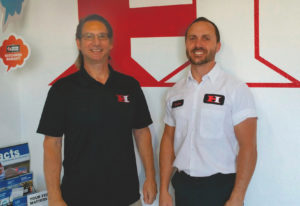 Today is the start of a series of articles aimed at explaining how your vehicle works.
Today is the start of a series of articles aimed at explaining how your vehicle works.
We get into our cars every day, turn the key and drive off to get our day going. Have you ever stopped to think of what actually makes this possible?
We are going to start with how your engine works. Because a vast majority of vehicles use a four-stroke combustion engine, that will be our focus. There are other types, however, such as diesel, hybrid and full electric, which continue to grow in popularity.
Simply put, a four-stroke engine has four distinct steps that create the constant energy needed to propel your vehicle down the road. Of course, there are other components involved to actually create the ability to move and stop your car, but these will be covered in other articles. Today, we are just going to focus on how the engine creates the power.
The four steps or strokes of your four-stroke engine are the intake, compression, combustion and exhaust. Let’s break these down one by one.
The intake stroke is when the piston is moving downward, and the intake valve is in the open position. This allows the cylinder to be filled with air and fuel. The air comes in by way of the air filter, throttle body and intake manifold. The fuel injector introduces the fuel.
The compression stroke is next. The intake valve closes to seal the cylinder as the piston rises and compresses the air fuel mixture. The denser mixture will ignite better during the combustion stroke.
The combustion stroke starts when the spark plug ignites the compressed air fuel mixture and it explodes, forcing the piston down again. This stroke provides the power for the engine.
The last step is the exhaust stroke. The exhaust valve opens as the piston rises and pushes the combusted gas out of the cylinder and through the exhaust system.
Your vehicle’s cylinders perform these steps at different times, so there always is power being generated by the engine. Also, the amount of fuel introduced dictates how big the combustion is and the speed at which the engine runs. More fuel equals bigger explosions, equals a faster running engine.
Whether you have four, five, six or eight cylinders, the up and down motion of the pistons is converted to a rotational motion by the rods and crankshaft. This rotational motion is then used to propel the vehicle as it is transferred through the transmission and drivetrain.
Oil allows your vehicle’s engine to continue this process by preventing the metal parts from grinding into each other. The lubrication factor of the oil is just enough where the surfaces do not wear each other out.
The combustion inside of your vehicle’s engine slowly degrades the oil’s ability to lubricate. If the oil is not changed sufficiently, internal engine damage will occur. The engine cooling system is used to dissipate the heat generated by the combustion process.
Next month, we will explore how the transmission uses your vehicle’s engine power to create motion.
Please call H and I Automotive at (480) 985-9279 with any questions or to obtain an estimate. We are a full service professional automotive service center, serving our East Valley neighbors since 2009. Find us online at handiautomotive.com or on Facebook and Google+.

